This article was co-authored by Chris M. Matsko, MD. Dr. Chris M. Matsko is a retired physician based in Pittsburgh, Pennsylvania. With over 25 years of medical research experience, Dr. Matsko was awarded the Pittsburgh Cornell University Leadership Award for Excellence. He holds a BS in Nutritional Science from Cornell University and an MD from the Temple University School of Medicine in 2007. Dr. Matsko earned a Research Writing Certification from the American Medical Writers Association (AMWA) in 2016 and a Medical Writing & Editing Certification from the University of Chicago in 2017.
There are 16 references cited in this article, which can be found at the bottom of the page.
wikiHow marks an article as reader-approved once it receives enough positive feedback. In this case, 100% of readers who voted found the article helpful, earning it our reader-approved status.
This article has been viewed 275,967 times.
You already know that quitting smoking is an excellent choice to make for your health. During the first few weeks, you may experience some quitting related symptoms, such as chest congestion. You may have coughing fits, tightness or mucus in your chest, and a slight hoarseness of your voice.[1] Though it may be uncomfortable at first, chest congestion indicates that your body is beginning to repair itself and recover from your smoking habit.[2]
Steps
Dealing with Chest Congestion in the Short Term
-
1Drink lots of fluids, especially water. Drinking water will help your body to combat the congestion by thinning the mucus in your lungs and make it easier to cough up the mucus. It will also keep your body hydrated.[3]
- Tobacco smoke slows the movement of the tiny hairs (known as cilia) that line our lungs and help to remove mucus. When you stop smoking, these hairs become more active and start to clear away the mucus built up in your lungs. This can result in increased coughing for a few weeks after you first quit.[4]
- Drinking orange juice and other natural fruit juices will provide your body with the vitamins and minerals it needs to combat congestion.
- Avoid alcohol, coffee, and sodas which can contribute to dehydration as much as possible.
-
2Take a hot shower or bath once or twice a day. Dry air can irritate your lungs and increase your coughing fits. The steam produced from a hot shower or bath can moisten the air passages in your lungs and thin out the mucus.[5]Advertisement
-
3Sleep with your head elevated. Keep your head angled at 15 degrees by placing one or two pillows directly underneath your head. This will minimize mucus draining into your throat which causes coughing at night.[6]
-
4Try a facial steam. Facial steamers produce similar results outside the shower, directing the steam from hot water directly into your airways and lungs. Pour six cups of hot (almost boiling) water into a bowl. Make a tent over your head with a bath or hand towel. Place your nose and mouth over the bowl and inhale deeply.
- Add three to four drop of eucalyptus oil to the water. Eucalyptus oil has both antibacterial and analgesic properties and acts as an expectorant, loosening phlegm that causes coughing.
- Add a few drops of peppermint oil to the steam to benefit from its soothing menthol agent.
- Professional facial steamers are also available at your local drugstore.
-
5Do a chest rub. Chest rubs, such as Vicks Vaporub, can help alleviate feelings of chest congestion via its menthol properties (the active agent in peppermint). Menthol can also reduce feelings of shortness of breath. Although the benefits from these products can be largely psychological, they can help alleviate the symptoms (but not the cause) of chest congestion.[7]
- Never apply the rub directly under your nose or used on infants or children under the age of 2. The active ingredient in many chest rubs, camphor, can be toxic when ingested.[8]
-
6Take Mucinex. If you don't have any aversion to a pill-based solution, Mucinex will significantly reduce any chest congestion you may suffer from. The medication thins and loosens mucus in the airways, clearing congestion, and making breathing easier.[9]
- Mucinex is designed for temporary relief of congestion and cold-like symptoms. It's important to consult your doctor before you use it to treat smoking-induced congestion or coughing.
-
7Avoid taking cough medicine. Coughing will help to loosen the phlegm from your lungs and will help you recover from chest congestion. Allow your body to cough, and stay away from over-the-counter cough medicines.[10]
Reducing Chest Congestion in the Long Term
-
1Ask your doctor about treatment for “smoker’s lung”. Although increased feelings of congestion are typical in the first few weeks after you stop smoking, be aware that any smoking habit increases your risk of “smoker’s lung”, a catch-all term for chronic bronchitis and chronic obstructive pulmonary disease (COPD), which are associated with a reduction of airflow due to lung damage. Both conditions are associated with coughing and feelings of breathlessness.[11]
- Individuals with smoker's lung experience a combination of symptoms similar to having chronic bronchitis and emphysema. These include chronic coughing, breathlessness, and mucus in your lungs.[12]
- Although treatment for these two conditions may be minor, it’s important to talk to your doctor after quitting smoking about your likelihood of contracting either of these conditions.
- Your doctor may recommend a chest X-ray or a CT scan to exclude other possibilities.
- A lung function test or a blood test may also be necessary to determine other contributors to your condition.
-
2Avoid any exposure to cigarette or cigar smoke. You should also wear a mask when you are working with strong fumes like paint or household cleaners with strong fumes.[13]
- If possible, stay indoors on high air pollution days.
- Stay away from wood stoves and kerosene heaters, which also can emit irritating fumes or smoke.
- If cold air aggravates your cough, wear a face mask before you go outside, particularly during the winter.[14]
-
3Exercise on a regular basis. It’s important to keep your lungs and cardiovascular system in good working order. Your body already begins the repair process as soon as you quit smoking. The more you exercise, particularly after you quit smoking, the more you will help your lungs gain back the capacity they lost while you were smoking.[15]
- A study examining the effects of quitting smoking found some physical improvements after just a week. Eleven young men who smoked about a pack a day for three and a half years were subjected to several tests while on a stationary bike before quitting, and then a week later. The study showed considerably increase in oxygen concentration in the lungs and an extension of exercise time.
-
4Buy a humidifier or vaporizer. Having a humidifier or vaporizer in your bedroom while you sleep can help you keep hydrated at night and will also help to loosen mucus. Keep the filter clean and the humidifier will minimize the amount of congestion-causing dust in the air.[16]
- Keep the vaporizer and humidifier clean. Every two to three days, clean the filter using a mixture of bleach and water (two tablespoons of bleach per one quart of water). Run the machine until dry (approximately 40 minutes) in a well-ventilated area, away from your bedroom.[17]
Soothing Your Throat and Chest Due to Congestion
-
1Gargle warm salt water. The coughing that comes from chest congestion can make your throat scratchy or sore. A saline (i.e. a salty) solution draws excess fluid from inflamed tissues in the throat, soothing them temporarily.[18]
- Dissolve ¼-1/2 teaspoons of salt in an eight ounce glass of warm (not too hot!) water. Gargle for 15-20 seconds and spit out the water.[19]
-
2Drink warm lemon juice and honey. The combination of honey and lemon may help to soothe your throat and help with chest congestion as well. Add honey and lemon juice to hot water or have a teaspoon of honey by itself to soothe your throat.[20]
-
3Add ginger to your diet. Ginger root is a natural anti-inflammatory and may soothe your irritated lungs. Drink ginger tea and add ginger root (not crystallized ginger) to recipes like soups and stir fries. Ginger candies can be an easy way to suppress coughing. [21]
- For an easy ginger tea, thinly slice a thumb-sized piece of ginger and simmer it in hot water for approximately 15 minutes. Add a bit of honey for further throat and chest relief.[22]
-
4Drink peppermint tea. Like ginger, peppermint is a natural expectorant and can help to thin mucus and break up phlegm. Its main active agent, menthol, is a good decongestant and is found in a number of over the counter treatments for chest congestion.
- Adding peppermint to your diet, such as drinking peppermint tea, can help alleviate basic symptoms of chest congestion.
Expert Q&A
Did you know you can get expert answers for this article?
Unlock expert answers by supporting wikiHow
-
QuestionHow do steroids work in clearing congestion?
 Chris M. Matsko, MDDr. Chris M. Matsko is a retired physician based in Pittsburgh, Pennsylvania. With over 25 years of medical research experience, Dr. Matsko was awarded the Pittsburgh Cornell University Leadership Award for Excellence. He holds a BS in Nutritional Science from Cornell University and an MD from the Temple University School of Medicine in 2007. Dr. Matsko earned a Research Writing Certification from the American Medical Writers Association (AMWA) in 2016 and a Medical Writing & Editing Certification from the University of Chicago in 2017.
Chris M. Matsko, MDDr. Chris M. Matsko is a retired physician based in Pittsburgh, Pennsylvania. With over 25 years of medical research experience, Dr. Matsko was awarded the Pittsburgh Cornell University Leadership Award for Excellence. He holds a BS in Nutritional Science from Cornell University and an MD from the Temple University School of Medicine in 2007. Dr. Matsko earned a Research Writing Certification from the American Medical Writers Association (AMWA) in 2016 and a Medical Writing & Editing Certification from the University of Chicago in 2017.
Family Medicine Physician
-
QuestionHow long does it take to become congested?
 Chris M. Matsko, MDDr. Chris M. Matsko is a retired physician based in Pittsburgh, Pennsylvania. With over 25 years of medical research experience, Dr. Matsko was awarded the Pittsburgh Cornell University Leadership Award for Excellence. He holds a BS in Nutritional Science from Cornell University and an MD from the Temple University School of Medicine in 2007. Dr. Matsko earned a Research Writing Certification from the American Medical Writers Association (AMWA) in 2016 and a Medical Writing & Editing Certification from the University of Chicago in 2017.
Chris M. Matsko, MDDr. Chris M. Matsko is a retired physician based in Pittsburgh, Pennsylvania. With over 25 years of medical research experience, Dr. Matsko was awarded the Pittsburgh Cornell University Leadership Award for Excellence. He holds a BS in Nutritional Science from Cornell University and an MD from the Temple University School of Medicine in 2007. Dr. Matsko earned a Research Writing Certification from the American Medical Writers Association (AMWA) in 2016 and a Medical Writing & Editing Certification from the University of Chicago in 2017.
Family Medicine Physician
References
- ↑ http://dailyhealthpost.com/this-is-what-happens-to-your-body-when-you-quit-smoking/
- ↑ http://www.mayoclinic.org/healthy-lifestyle/quit-smoking/expert-answers/quit-smoking/faq-20057818
- ↑ http://www.nhs.uk/Conditions/Chest-infection-adult/Pages/Introduction.aspx
- ↑ http://www.mayoclinic.org/healthy-lifestyle/quit-smoking/expert-answers/quit-smoking/faq-20057818
- ↑ http://www.mayoclinic.org/symptoms/cough/basics/when-to-see-doctor/sym-20050846
- ↑ https://globalnews.ca/news/3835372/nighttime-coughing-heres-what-you-should-and-shouldnt-do/
- ↑ http://www.ncbi.nlm.nih.gov/pmc/articles/PMC3628651/
- ↑ http://articles.latimes.com/2011/nov/14/health/la-he-skeptic-rubs-20111114
- ↑ http://www.webmd.com/drugs/2/drug-63818/mucinex-oral/details
- ↑ http://www.nhs.uk/Conditions/Chest-infection-adult/Pages/Introduction.aspx
- ↑ http://www.netdoctor.co.uk/diseases/facts/smokerslung.htm
- ↑ http://www.netdoctor.co.uk/diseases/facts/smokerslung.htm
- ↑ http://health.usnews.com/health-news/health-wellness/articles/2013/11/29/bronchitis-symptoms-and-treatment?page=2
- ↑ https://www.mayoclinic.org/diseases-conditions/bronchitis/diagnosis-treatment/drc-20355572
- ↑ http://dailyhealthpost.com/this-is-what-happens-to-your-body-when-you-quit-smoking/
- ↑ http://www.nhs.uk/Conditions/Chest-infection-adult/Pages/Introduction.aspx
- ↑ http://www.ghc.org/healthAndWellness/?item=/common/healthAndWellness/children/childIssues/cold.html
- ↑ http://www.mayoclinic.org/diseases-conditions/common-cold/in-depth/cold-remedies/art-20046403
- ↑ http://www.nytimes.com/2010/09/28/health/28real.html
- ↑ http://www.nhs.uk/Conditions/Chest-infection-adult/Pages/Introduction.aspx
- ↑ http://www.pitt.edu/~cjm6/sp99cough.html
- ↑ http://www.nlda.org/how-to-get-rid-of-chest-congestion-best-home-remedies/
About This Article
If you need to clear your lungs after smoking, drink lots of fluids to help your body thin out the congestion, which makes it easier to cough up. You can take a hot, steamy shower or bath twice daily so the steam can moisten the air passageways in your chest, or use a humidifier or vaporizer to get a similar effect. For immediate relief, try taking an over-the-counter expectorant medication to thin the mucus and encourage coughing. Be sure to avoid lung irritants like second-hand smoke and fumes from strong cleaners! For tips from our medical co-author on soothing your throat and chest, read on!
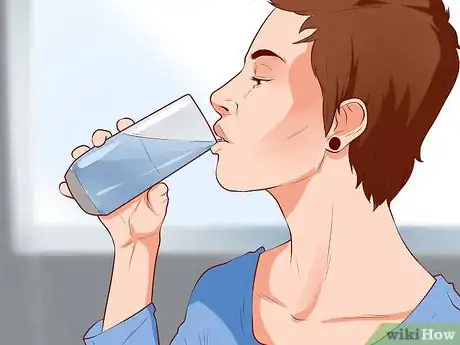

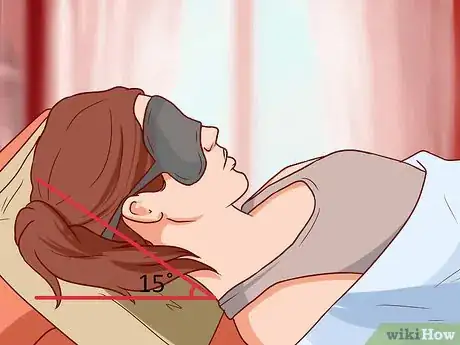
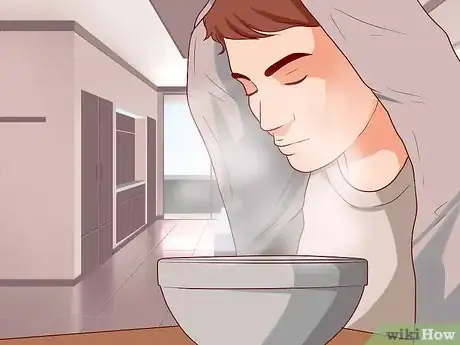
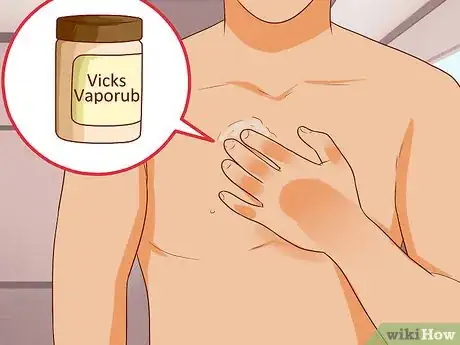
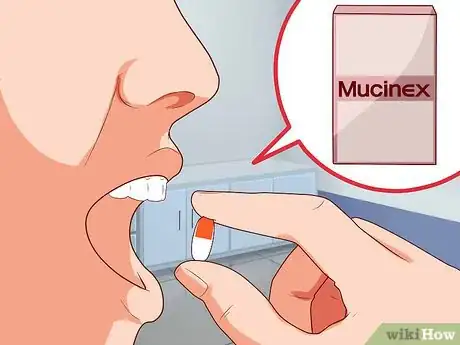
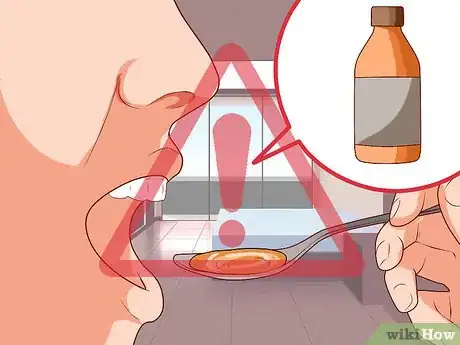

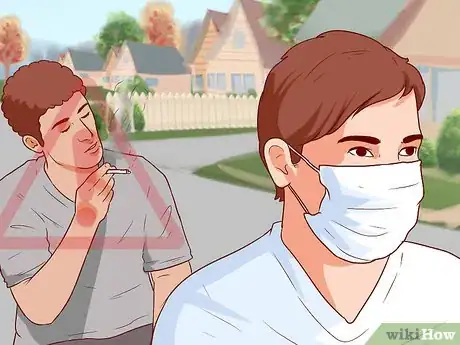















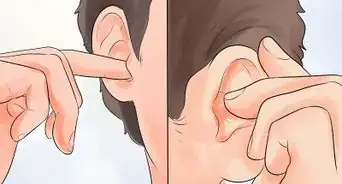
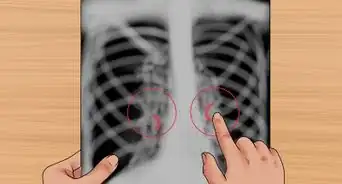


















































Medical Disclaimer
The content of this article is not intended to be a substitute for professional medical advice, examination, diagnosis, or treatment. You should always contact your doctor or other qualified healthcare professional before starting, changing, or stopping any kind of health treatment.
Read More...